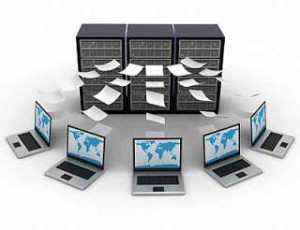
Through the hallowed halls of many a corporate IT department there continues to be an ongoing conversation about data governance, or put more simply, what is critical data, who “owns” it and who has a stake in the information culled from this data. Often, when faced with decisions that seem to have a technology solution behind them, organizations submit to the seemingly easier road and throw the responsibility into the lap of the IT department…after all, this is technology generated “stuff”.
If our conversation were to turn toward bits of data, this would seem plausible as they would not be useful at that level. However, once we coin the “stuff” as “data”, the possibilities for the use of this “stuff” as information has it take on a whole other meaning, which suggests a different way of thinking about the business process of data creation, gathering, storing, reporting, etc.
In enter the folks who “need” this data in the form of information to solve a business imperative. They are the people who “care”. As with most acts of creation, keeping responsibility for reliability and accuracy closest to the source usually guarantees this possibility. Ah, but then what happens when this data moves into the form of information and is handed off to those who need it?

Now, who is responsible for the care and feeding of this information? Theory and some experience along the way, say those who have a need for something will nurture it best.
I hope you have garnered the not so subtle difference between data and information…Let’s go back to where we started and set-up a couple of premises:
Data is created, gathered, stored, reported through technological processes, as defined by people who need information from this data.

Information is data that is in useful form, as requested by those who need it, usually to solve a business imperative.

Governance is the act of rule setting and monitoring. In the case of data or information governance, it is like the county seat for these valuable commodities. They cannot be separated since they reside symbiotically.
There was a time in our not so long ago technological world that the answer to the question, “DATA, DATA – WHO OWNS THE DATA & WHO CARES?” would be easy to answer. Technology had not become sophisticated enough to unleash the fruits of its labor into the business world without tight control. That day has passed…We now have savvy technology users throughout organizations who can quickly learn the processes necessary for them to avail themselves of what they need to perform their jobs – what the firm needs to increase revenue – and what predicative analysis can shine on the future planning for a firm.
Is it time for IT departments to step back from the Data Governance forefront, maintain the back-end processing, ensure tools are available to users and allow the organization to govern its data and information? How are you handling this in your organization? What is working and what is challenging?

For top notch technology resources, please contact The Resource Collaborative at info@trcollaborative.com.
